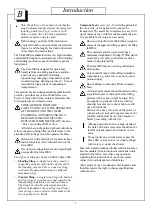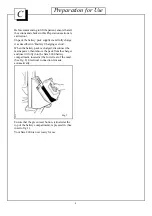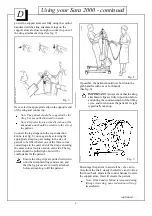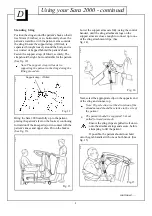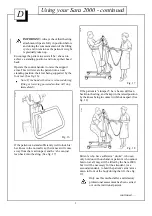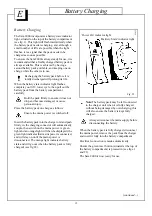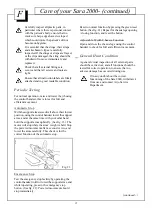
10
Patient’s wearing nylon nightclothes /
dressing gowns are prone to be “slippery” -
the sling may ride up the back, causing
slight pressure under the arms. It may be
necessary to hold the sling in position when
lifting or lowering.
Release the brakes, and transfer the patient to new
position, i.e., toilet, wheelchair, chair, bed, etc.
Note: Transportation is possible with the
chassis legs open or closed, but it will be
easier through doorways etc., with the chassis
legs closed.
While the patient is raised, make any necessary
adjustments to clothing, incontinence pads etc.,
before lowering again. Lower the patient carefully
using the control handset.
Apply the chassis brakes if leaving the
patient at the toilet, or if leaving the patient
unattended.
When the patient is seated in the new position, and
you wish to remove the sling, unclip the shoulder
support attachment clips, then release the support
strap.
Do not attempt to release the support strap
while the patient is supported by the sling.
Remove the sling from the patient.
If the patient lacks sitting balance and has
been returned to the bed on the Sara 2000,
a second attendant may be needed to
support the patient while the sling is being
removed. (See fig. 11).
Commode Seat (Accessory)
For toileting patients at the chair side or for patients
who cannot be transported, the use of the commode
seat and frame is an easy alternative. The commode
frame is inserted into the holes in the chassis at
either side of the footrest, (see figs 1 and 20), once
the patient has been lifted to a standing or near
standing position in the manner previously
described.
Removal of any clothing can be attended
to, and the patient is then lowered down
onto the commode seat. It is recommended
that the patient is kept supported by the
sling. The retractable commode pan,
accessible from the rear of the seat, (see fig.
20), may be utilised, or removed to enable
the patient to be positioned over a toilet.
Apply chassis brakes if leaving the patient
unattended.
Fig. 19
P.
1065
a
P.
10
63
f
Fig. 20
D
Using your Sara 2000 - continued
continued .....



